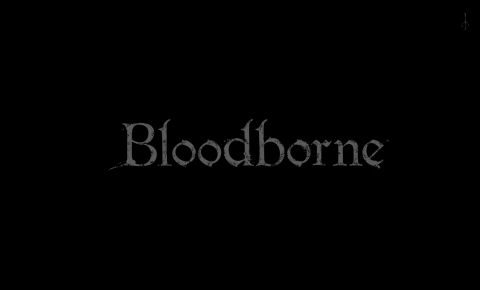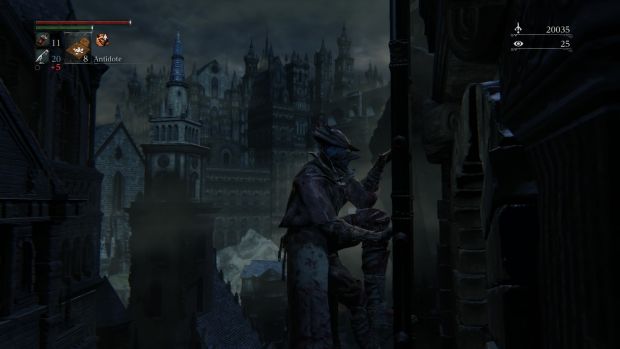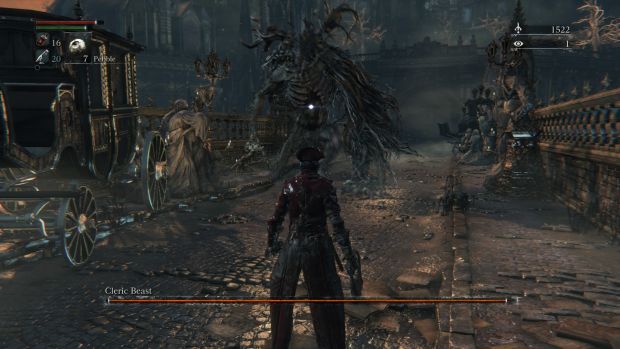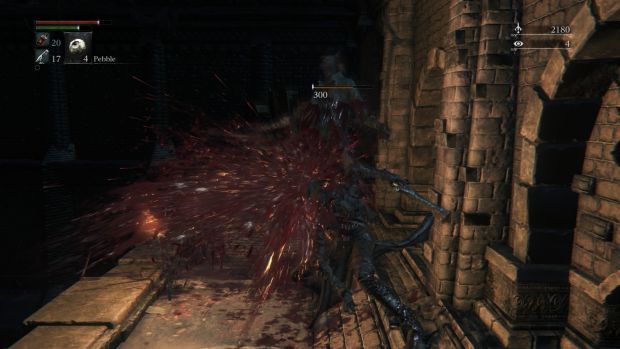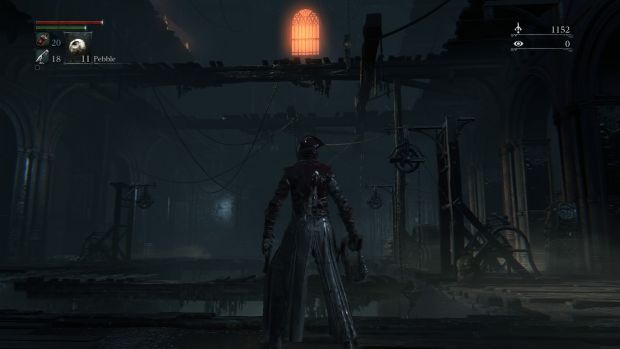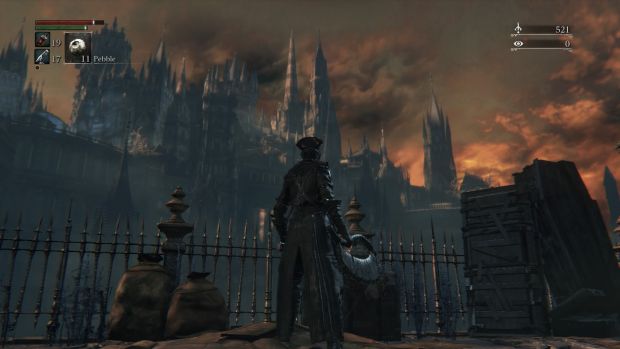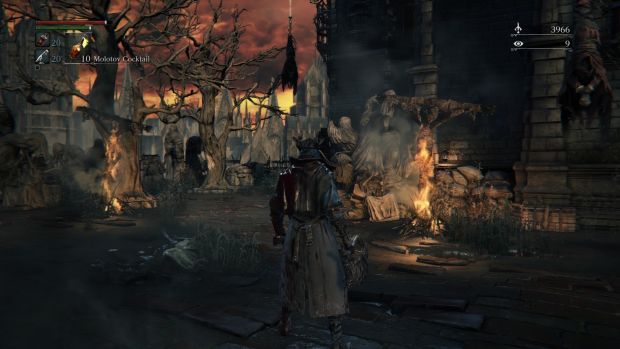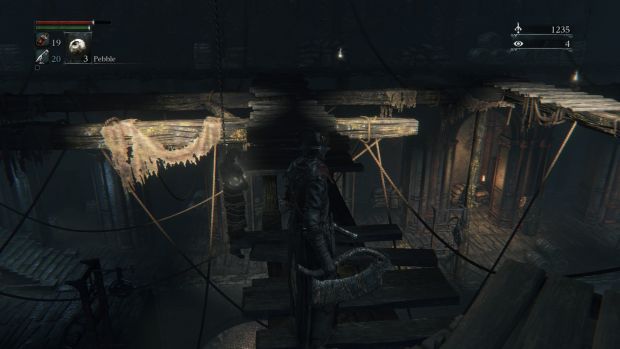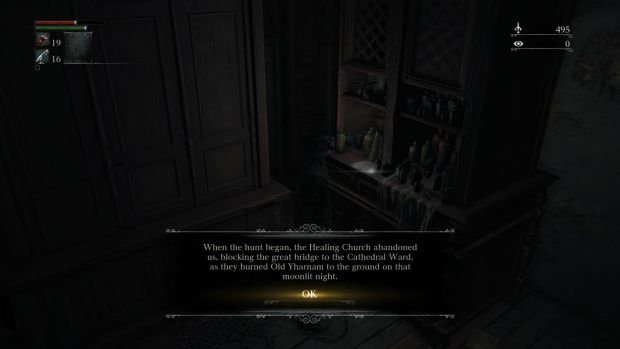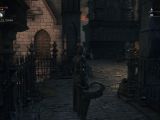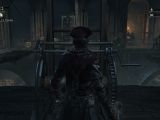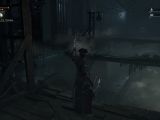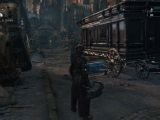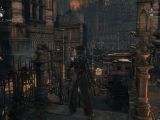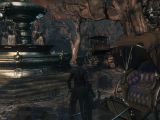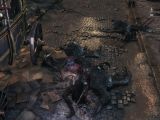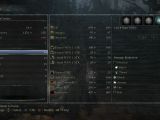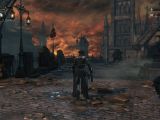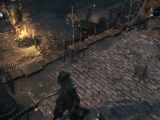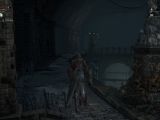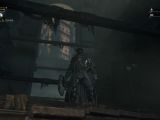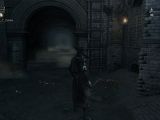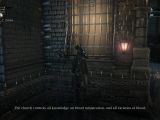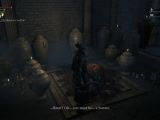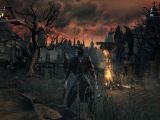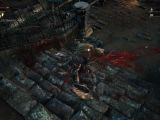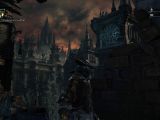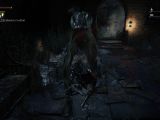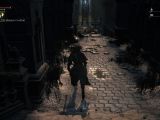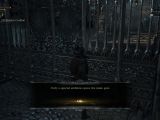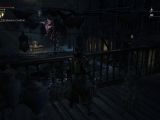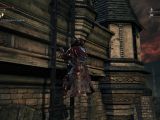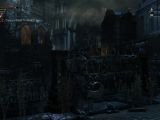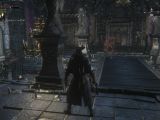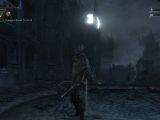Bloodborne, Dragon Age: Inquisition, The Witcher and The Elder Scrolls V: Skyrim are the kind of role-playing games that make people say, “This is why I like video games so much.”
They offer a challenging and enthralling journey through a fantasy world filled with mystery and excitement, and they enrich your life with the wondrous experience they provide.
In the case of Bloodborne, Japanese developer From Software’s PlayStation 4 exclusive dementia simulator, things are a little trickier, due to some of its unique design points.
First of all, there is no story, and the difficulty level has crazy spikes and a wicked learning curve. Demon’s Souls, Dark Souls and Dark Souls 2, From Software’s most notable creations so far, have had their appeal predicated on their unfair difficulty and on the feeling of satisfaction one derives from besting their numerous challenges.
Instead of a glorious epic where you play a central role in the unfolding of events and the fate of the land you are in, you are treated to a harrowing treasure hunt, trying to make sense of the world around you by following cryptic clues and exploring a maddening gameplay dynamic that is built upon the assumption that you will inevitably die.
And you will die a lot. Unlike other role-playing games where death results in a trip to the game over screen and loading the latest saved state, Bloodborne treats your demise as expected and its repeated occurrence as a valuable part of what it has to offer.
Story and setting
From Software is usually pretty good at creating interesting universes teeming with lore, but I always found the lack of a proper story arc, characters and honesty extremely annoying.
The company’s games don’t follow the usual hand-holding routine of AAA gaming and they don’t offer you the somewhat live open worlds you find in non-linear productions. Everything is obfuscated and mysterious, and you always have to guess what’s going on, or worse, look it up online.
It’s lazy and it’s a morsel of bad design. Somebody invented the world, all of its events and characters, therefore, there is an omniscient being that is purposefully obfuscating your experience just so that you would consider it ooh, so mysterious.
So instead of the inhabitants of the world filling you in about what’s going on, you get cardboard cut-outs that merely serve as a means for the delivery of cryptic messages, without actually being active players in their universe.
It also means that there is no sense of purpose, you don’t know why you’re playing and where everything will tentatively go, and all the surprises stem not from brilliant writing or design, but from the purposeful withholding of information you should be in possession of already.
You start your adventure in Bloodborne without knowing who you are or what you’re going after. You’re thrown into the streets of Yharnam, a gorgeous gothic city modeled after Victorian-era London, where everyone is out for a night of fun and games, namely patrolling the city streets and hunting for inhuman beasts.
Instead of postponing your visit or simply going to sleep and exploring the city once the hunt is over, as any sensible human being would, you choose to murder everyone and everything in sight, and gleam information from taunts, shallow non-playable characters that only talk in riddles, and every other unreliable source you can think of, instead of actually having a conversation with someone or going to the library.
As you don’t really play a role, and you’re not engaged with the world in any way, it’s hard to get invested in Bloodborne early on. The payoff comes much later, and it’s just another steep entry point that makes the game frustrating in the beginning.
There are quite a lot of things going on in the city and its underbelly, stemming mainly from the Healing Church’s experiments with a tainted kind of mystery blood, and the unfortunate results of tampering and getting entangled with forces beyond man’s comprehension.
I don’t want to spoil anything, since From Software’s “less is more” design philosophy translates into a lot of the enjoyment of the game coming from the discovery of its setting. Although lacking a traditional story, the atmosphere and rich lore of the setting more than make up for it, even though you have to go through great pains to acquire all the information, drip by drip.
In this particular case, with werewolves and beast men, ghastly figures and distorted abominations, and all other kinds of eldritch horrors lurking around, and with abundant secrets to stumble upon, including a ton of surprises and some unexpected twists, adventuring through Yharnam is a truly compelling experience.
Starting out
The character creation system remains similar to the ones used in the past, being remarkably easy to come up with lanky, weirdly shaped ones with huge protruding noses and funky-colored skin and hair.
The classes, or backgrounds, are merely some guidelines that influence some of your starting stats, but as you begin to progress through the game, the path of your character is completely open.
The standard loadout consists of a firearm and main-hand weapon, and hand-to-hand combat is the game’s biggest focus. There is quite some variety on this front, and Souls fans will notice the more proactive approach to encounters.
For starters, the shield is gone, so you have to be constantly dodging and on the move in order to avoid damage, making everything much more dynamic. To further incentivize this approach, whenever an enemy hits you, you have a limited window of opportunity where you can regain the lost health by retaliating and attacking the monster, making it worthwhile to be aggressive, and easier to recoup from a mistake.
Furthermore, you can also use the firearm to stagger an opponent, if you time the attack just right, interrupting an ongoing attack, after which you can perform a visceral attack, dealing massive amounts of damage.
For the most part though, you’ll be slashing away with your main weapon, mindful of your stamina bar, in order to avoid getting winded, rolling around your adversaries and dodging their unrelenting attacks.
As I didn’t really like the Souls series in general, the beginning of Bloodborne was a pretty punishing experience. In order to be able to succeed, you have to forget some of the standard video game design tropes and accept and learn the way From Software does things.
After being reminded that death can come out of nowhere for an excruciating number of times, I learned that you have to be very methodical about combat. It’s less about having fun and spamming abilities, and more about resource management, timing and always erring on the side of caution.
Once I got used to the stamina bar depleting in four hits, meaning that I could only deliver three blows to an opponent before rolling away, things started to improve. I also had to learn not to engage groups head-on, and to dole out the damage one hit at a time, whenever I could identify a safe opportunity to do so, rather than go all in and risk failure.
Getting used to the combat system is frustrating at first, since it’s basically just like in every other game, your hits stun-lock most opponents your size, only you run out of steam and suddenly your attack speed drops, exposing you to damage.
And since you die in around three hits, and you lose your footing whenever you receive a blow, and enemies usually walk around in groups, it’s easy to see how a single misstep can result in an untimely, often unavoidable death.
Now, this compounded with the fact that the control scheme isn’t the most responsive in the world, and with the fact that you lose all your progress and enemies are reset whenever you die, can make playing Bloodborne an exercise in agony.
This is especially brought to light during boss fights, truly unforgiving ordeals where you really have to master resource use and timing in order to emerge victorious.
You can also call for help using the game's weird multiplayer system when the challenge gets too tough for you, but for the time being, it has some connectivity issues.
Invading other people's games and getting other hunters to chase you down can be an exhilarating experience, with the challenging and sometimes lengthy duels adding an extra layer of difficulty and satisfaction to the experience.
Getting used to the pain
Learning to pay attention to the stamina bar got me killed a lot, but I eventually got to appreciate some of the elegance behind it. It makes battles feel contrived, but also more methodical and strategic.
It also allows you to be overpowered without making the game easy, as although you can kill multiple enemies at once without them being able to retaliate, you also end up exposing yourself and becoming very vulnerable to any incoming aggression.
I absolutely hate the way you get trapped in attack animations, unable to cancel them and roll away, which adds half of the challenge to battles, as you can only afford to attack when you are certain that you can get away with it, especially when facing bigger opponents.
The character is much more responsive than in Dark Souls 2, but now overextending still takes a huge amount of patience and self-restraint, especially since a bad camera angle or getting stuck behind some random decorative doodads can also get you killed.
That means that some of the fights will feel cumbersome and drawn out, and you’ll spend more time rolling around dodging attacks trying to figure out your adversary’s attack patterns and trying to find a spot where you have enough space in order to make sure that your dodge roll or dash don’t hit an obstacle.
“The long wind-up for attacks becomes especially noticeable when using slow, two-handed polearms or hammers but is offset by their destructive power.”
The fact that some of the more difficult monsters have more than one type of attack only adds to this feeling of frustration, making combat very passive until you get used to that particular enemy through endless repetition.
There are a lot of enemies that can kill you in four hits, which means that you are technically safe to risk an extra attack, but the same enemy can unleash a flurry of lethal blows without affording you the time to react and without you being able to cancel an attack in order to get out of the way.
Combat is designed to be fast, overall, as you have a lot of weapons with a high attack speed, but it still ends up feeling slow due to the fact that you almost always have to wait for an opponent’s move, and then step in and capitalize on his downtime, unless you’re killing him for the hundredth time.
The long wind-up for attacks becomes especially noticeable when using slow, two-handed polearms or hammers but is offset by their destructive power. Using heavy weapons effectively is difficult due to the extra time you have to devote to getting the timing right, but their blows can stagger enemies and render them unable to react before your next strike lands.
What still remains infuriating is the fact that, for a game that relies on near-perfect mechanical execution, Bloodborne still falls prey to faulty controls, as sometimes doing the same roll two times in a row can land you back in the place you started from, or not being able to effectively dodge an attack that you dodged countless times before.
Granted, there are several options when it comes to side-stepping and dodging, and the most counter-intuitive of all, rolling toward an enemy that is assaulting you, is oftentimes the most effective.
Sometimes trying to perform the same move that got you behind the opponent will make you roll in place toward him, allowing him to pummel you into oblivion, while other times you’ll find yourself disoriented by wonky camera angles or cheated by faulty hitbox detection.
In fact, I felt that close to half my deaths were due to factors outside my control, in the beginning portion of the game at least, and that trying to mitigate them and playing cautiously translated into a less exciting and much more repetitive and even tedious overall experience, like trying to master a gauntlet and then performing its soulless choreography flawlessly in order to move forward.
Starting to enjoy it
There aren’t too many weapons in the game, but they’re pretty well fleshed out into different categories, enabling everyone to find a suitable tool for the job at hand, without having to worry about it being rendered obsolete by a random drop later on.
Weapons have two operating modes, usually a fast one with a shorter range and a slower one with increased reach or area of effect capability. You can even chain the transformation into a combo attack, but it takes a while to get the hang of what to use and when in order to get the most out of things.
This ensures that there is a degree of variety when it comes to fighting your foes in Yharnam, if you’re not the kind of person who enjoys finding a favorite weapon and sticking with it for the entire game.
Furthermore, weapons can be upgraded through the traditional gem and socket system, only wearing a different name in Bloodborne. The enhancements you find early on add extra attack damage, but the more advanced ones pile up elemental damage or other effects that you can then further boost through your stat allocation.
Some of the weapons and mods scale better with certain stats, which means that you can get an elemental bonus from Blood Gems that gives you a lot more bonus damage from scaling with a high Arcane statistic than simply stacking damage and strength.
Some of the monsters you’ll encounter are more vulnerable to certain kinds of damage, but it’s more of an added bonus, rather than something completely game-changing. It’s not on the insane level it was in Dark Souls 2, so you won’t have to look up anything on the Internet and then use a specific weapon in order to be able to get through an area.
However, the same design mantra has been kept, similar to the way old-school arcade platformers work, where you would repeat a certain section of a level until you were able to pull it off flawlessly, which enabled you to progress with enough resources to be able to tackle a new section.
This means that you have to routinely farm the same portion of the game in order to get resources and to perfect your approach, eventually reaching a point where it becomes somewhat trivial, compared to the grueling experience the first run through it felt like, which is pretty much how the entire Souls series works.
Speaking of Souls, a similar mechanic is used in Bloodborne, whereupon killing an enemy, you absorb a certain amount of blood echoes, which function as the game’s money and experience points.
You can use blood echoes to level up your character and raise various stats, to purchase weapons and combat consumables such as healing potions or Molotov bombs, as well as other drinkables that don’t become useful until later on, such as a remedy for poison or frenzy.
The healing potions come in the form of blood transfusions, and using them is much quicker than in the Souls series, not to mention that you can carry 20 of them at a time and also get them as drops from monsters.
Overall, this, alongside some other quality-of-life improvements such as being able to sell stuff to the merchants directly, made me think that From Software was trying to make its creation less obtuse and more accessible to those who aren’t fans of some of its core design pillars.
Some of the lore elements are discussed in more detail, and you get a better glimpse of what is actually happening during the hunt and why everyone is going mad, and you also get fed morsels of Yharnam’s troubled and gruesome history, which becomes more and more fascinating the deeper you delve.
Whenever you think you have reached a dead end, a new area opens itself to you, with new enemies and challenges, and more horrific details regarding Yharnam’s perdition.
Sound, visuals, and atmosphere
Its grotesque enemies and creepy environments make the game a perfect horror experience. The ominous feeling that there’s always something more than the eye can see and that somehow you’re not getting the full picture can be haunting, especially when superimposed on the weird but intriguing creature design and the truly masterful level layouts.
Overall, environments can seem a little drab at first, since you get to see the same Victorian urban environments, as most of your adventures take place within Yharnam. Thankfully, the art team did a splendid job conveying the oppressive atmosphere and fleshing the city in marvelous detail, managing to make navigating through it a truly enjoyable visual experience.
The layouts and detail make each area feel distinct, and you'll be able to easily recognize each of them and get your bearings straight wherever you are. Although the city is huge, you won't get lost, because each of the areas you venture through has a certain sense of identity and uniqueness.
Furthermore, the fact that the game manages to look so good while using a palette comprised mostly out of grey and brown is another remarkable feat, making the whole experience more striking, in spite of some minor problems related to anti-aliasing and light reflection making all surfaces look unnaturally shiny.
“The development team’s attention to detail has been put to very good use, and Yharnam, together with its surroundings, is one of the most masterfully crafted fantasy universes in video games to date.”
The fact that the entire city is one interconnected map, with plenty of shortcuts to discover, and with secrets lying in wait behind seemingly innocuous dead ends, only serves to provide more depth to your journey through Yharnam.
This is also enhanced by the lovely orchestral music, swelling during times of action, and otherwise providing a generally creepy vibe, heightened by the ominous sounds of the city, from distant bells, moans and shrieks, to insane laughter and the exclamations of the townsfolk, both determined to take you out and scared of you at the same time.
From an aural point of view, Bloodborne delivers a truly stunning horror experience, full of anticipation and gravitas, greatly contributing to the all-around stunningly immersive atmosphere of Yharnam.
Labeling Bloodborne as "Dark Souls: Van Helsing Edition" wouldn't be far from the truth, as the game manages to mix the crazy creativity of From Software with the engrossing sheen of industrial-era European fantasy to great effect.
The finishing touch of adding some Lovecraftian horror themes such as the futility of human struggle, the focus on visceral imagery, and the distressing and obsessive existentialist search for answers that lie beyond our comprehension, further solidifies the haunting appeal of what is the PlayStation 4's best game yet.
The Good
- Great visuals and art direction
- Engrossing atmosphere
- Solid combat
- Very good level design
- Very challenging
The Bad
- Very long loading times
- Occasional wonky camera angles
- The controls misfire from time to time
- Obfuscated story
- Very challenging
Conclusion
It’s definitely friendlier than Dark Souls, more straightforward, and it feels like you’re taking less of a gamble when exploring the game world. You no longer have to guess and risk as much, there are still unfathomable notions floating around, but you have a better grasp on where you have to go and, surprisingly, even why you have to go there and do the things you do.
And getting to those places, exploring them and uncovering their secrets, as elusive and ambiguous as they may be, feels really good. Sure, it’s often daunting and frustrating, sometimes downright unfair, but overall, it’s definitely worth it.
The development team’s attention to detail has been put to very good use, and Yharnam, together with its surroundings, is one of the most masterfully crafted fantasy universes in video games to date.
All in all, I wouldn’t go as far as to call it a masterpiece, as I think there are a ton of things wrong with Bloodborne, but it certainly bears the hallmarks of one. In spite of its numerous flaws, of which the most jarring is the insane amount of time spent at loading screens, it’s a very solid game, one of the best in the genre, an undeniable fact that diminishes the impact of its shortcomings.
Bloodborne is not only exciting to play because of its combat mechanics but also through the structure of its world and the creativity exhibited by its makers, through the foreboding feeling that creeps inside you the more you explore its dark secrets and leaves you craving for more.
It’s challenging and unforgiving, and demands your full attention, while at the same time making you feel empowered. You’re almost always engaged and struggling to survive, sometimes barely making it, and there’s a lot to be said for a game that makes you feel overpowered but conscious of the fact that even a pack of low-level goons can rob you of that feeling if you lose your focus for just a few seconds.
Bloodborne is the kind of game that keeps you engaged with it long after you put it down, haunting you with a unique mix of hope and hopelessness, flaunting your own shortcomings and provoking you to overcome them through constant struggle, at the end of which awaits only more dread.
 14 DAY TRIAL //
14 DAY TRIAL // 